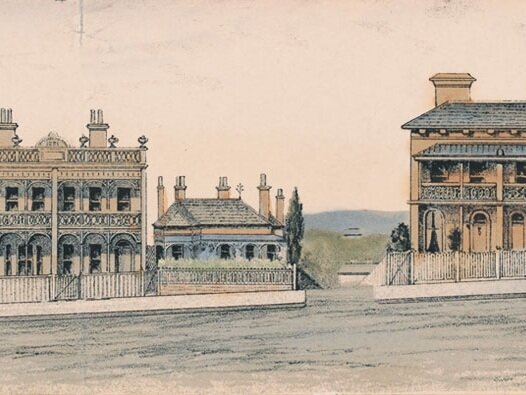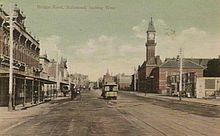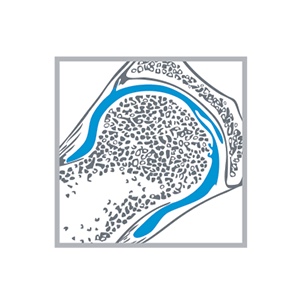
15 ERIN STREET RICHMOND
The Richmond Hill area within the precinct has aesthetic significance as an enclave of grand Victorian houses, which enhanced by its hillside topography, mature plantings and unusual urban elements such as the obliquely-sited West Richmond railway station, and a stepped lane off Highett Street. The aesthetic qualities of the buildings in the precinct are enhanced by traditional streetscape materials such as asphalt footpaths, bluestone kerb and channel and bluestone laneways. Erin Street is notable as a grand nineteenth century streetscape containing of some of Richmond's most substantial late nineteenth century houses, most with extravagant 'Boom era' decoration and many retaining original front and side fences. The Richmond Hill area within the precinct is historically significant for its associations with various eminent Victorians and others who lived there and were important in the development of Richmond.

The West Richmond precinct is of local historic and aesthetic significance to the City of Yarra.
The precinct provides tangible evidence of the key phases in the residential development of Richmond from the time of earliest settlement in the 1850s to the inter-war period and demonstrates how the areas closest to Melbourne town were the first to be subdivided and developed. It is also important for demonstrating an important phase of development in the late interwar period, which was characterised by industrial and higher density residential development. The precinct is of note as a vivid illustration of how class distinctions were reflected in the design and location of housing from the earliest time of settlement in Richmond. The substantial mansions and villas in and around Erin Street, in particular, demonstrate the early importance of Richmond Hill as a suburb favoured by wealthy and the elite, overlooking the working-class housing that developing on the flat areas around Smith and York streets.
The precinct demonstrates the principal characteristics of residential areas in Richmond that were largely developed prior to World War II and are comprised of predominantly Victorian era housing, supplemented by Edwardian and interwar infill, with commercial buildings in small groups and on corner sites. Overall, the intactness of the building stock to the period prior to World War II is very high and creates visually cohesive and consistent streetscapes that are complemented by traditional public realm materials such as asphalt footpaths and bluestone kerb and channel.

The history and tradition behind the use of the titles of male and female surgeons
In the United Kingdom, the Republic of Ireland and in some Commonwealth countries (such as South Africa, New Zealand and some states of Australia), many surgeons use the title Mr (or Miss, Ms, Mrs, as appropriate), rather than Dr (Doctor). Until the 19th century, earning a medical degree was not required to become a qualified surgeon. Hence, the modern practice of reverting from Dr to Mr after successfully completing qualifying exams in surgery (e.g., Membership of the Royal College of Surgeons or the Royal Australasian College of Surgeons) is a historical reference to the origins of surgery in the United Kingdom as non-medically qualified barber surgeons.
Wikipedia



